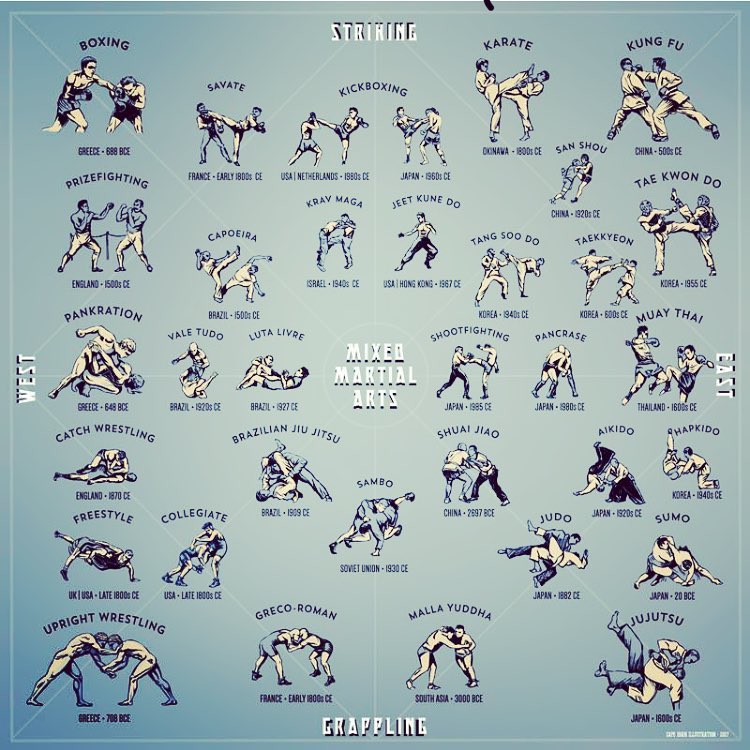Unwinding The Secret Of Several Fighting Style Disciplines: A Guide To Martial Arts, Taekwondo, And Much More
Unwinding The Secret Of Several Fighting Style Disciplines: A Guide To Martial Arts, Taekwondo, And Much More
Blog Article
Write-Up Created By-Childers Haastrup
Are you tired of feeling bewildered by the huge globe of martial arts? With numerous styles to choose from, it can be simple to get shed in a sea of punches, kicks, and mysterious names. Yet fear not!
This discussion will demystify the different martial arts designs, taking you on a journey from the powerful strikes of Martial arts to the dynamic kicks of Taekwondo. Get ready to uncover the beginnings, techniques, and viewpoints behind these ancient art forms.
So, tighten https://www.herefordtimes.com/news/19911030.kids-surprise-herefordshire-martial-arts-teacher-final-farewell/ and prepare to embark on an informing expedition right into the fascinating globe of martial arts.
Origins of Martial Arts Styles
The origins of fighting styles designs can be mapped back to ancient people and their need for protection and combat strategies. Throughout background, different societies created their own special methods of battling, each with its very own set of techniques and philosophies.
In China, for example, martial arts designs such as Martial art and Tai Chi were developed as a way of protection and improving physical and mental health.
In Japan, the samurai warriors produced designs like Karate and Judo, focusing on discipline, precision, and proficiency of the body.
Likewise, in Korea, Taekwondo emerged as a martial art emphasizing high kicks, fast activities, and psychological perseverance.
These early human beings laid the structure for the diverse range of martial arts styles that exist today, each with its own rich history and social significance.
Techniques and Training Techniques
To master martial arts designs, practitioners should find out numerous techniques and training approaches.
Techniques are the particular activities and actions used in combat, such as punches, kicks, throws, and obstructs. Different martial arts designs have their very own one-of-a-kind set of techniques that professionals need to master via strenuous training.
Training approaches vary relying on the design, but they generally entail a mix of physical fitness, drills, competing, and types.
Physical fitness is vital to develop toughness, flexibility, and endurance. Drills help experts fine-tune their techniques and boost their rate and accuracy.
Competing enables learn this here now to practice their techniques in a managed, realistic setting. Kinds, additionally known as kata, are deliberate sequences of movements that help professionals develop muscular tissue memory and emphasis.
Ideologies and Concepts
Checking out the philosophies and concepts of martial arts designs can provide you with a much deeper understanding of your selected technique. Each fighting style has its very own one-of-a-kind approach and collection of assisting concepts that shape the way it's exercised.
As an example, Karate stresses technique, respect, and self-control. https://waylonwdims.blogscribble.com/33931247/launch-your-adventure-beginning-your-martial-arts-journey-with-a-beginner-friendly-academy instructs practitioners to concentrate their body and minds, allowing them to protect themselves while preserving a sense of inner peace.
On the other hand, Taekwondo puts a solid emphasis on speed, dexterity, and versatility. Its principles are rooted in the tenets of politeness, honesty, perseverance, self-constraint, and indomitable spirit.
Final thought
Now that you have actually discovered the origins, techniques, and philosophies of numerous martial arts styles, you have a much deeper understanding of these old techniques.
Envision a young karate pupil, experimenting steadfast resolution and focus, appearing boards with an effective punch.
Their journey showcases the dedication and strength required to understand a martial art, reminding us that with self-control and willpower, anything is possible.
